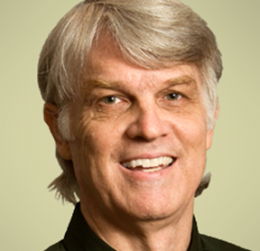Richard Patrick Morton
Professor Emeritus & Adjunct Professor

Professor Emeritus & Adjunct Professor
Number Theory, Algebra, Geometry
Prof. Morton's major areas of interest are number theory, algebra, and geometry. In number theory he has mainly studied diophantine equations that are related to algebraic structure. Dr. Morton’s Ph.D. thesis was on the Pell equation x^2 – Dpy^2 = –1, in which he proved upper and lower bounds for the density of primes p for which this equation has a solution in integers, for a fixed positive integer D of a certain form. This analysis gave a lower bound for the number of real quadratic fields for which the 2-Sylow subgroup of the class group is a specific abelian group of exponent four, along with an explicit construction of these quadratic fields. This is closely related to the conjectures known as the Cohen-Lenstra heuristics, a topic of current research interest.
Dr. Morton has also studied sequences that are related to finite automata and digit patterns, including the Rudin-Shapiro sequence and other self-similar sequences that arise from paper folding. In 1983 this led to a joint paper with John Brillhart and Paul Erdös, in which the properties of a nowhere differentiable function related to the Rudin-Shapiro summatory function were studied. His paper with Mourant on groups of self-similar sequences led Allouche and Shallit to define a far-reaching algebraic generalization of the notion of an automatic sequence.
In the 1990’s Dr. Morton wrote a number of papers on the number theory and Galois theory of the periodic points of polynomial maps. He discovered, with Franco Vivaldi, a formula for the discriminant of the dynatomic polynomial, whose roots are the periodic points of primitive period n of a polynomial map over an integral domain. In particular, this gave an explanation for the high factorability of this discriminant for the well-known map f(x) = x^2 + c. With Joe Silverman, he studied the algebraic units that arise in a natural way from the periodic points of a polynomial map. He also proved general conditions under which the dynatomic polynomial is irreducible and determined its Galois group, thereby generalizing a result of Thierry Bousch and providing algebraic proofs.
More recently, Dr. Morton has studied the invariants of elliptic curves, and in 2003 he proved a new, elementary formula for the supersingular polynomial in characteristic p, which has been a subject of great interest since it was originally introduced, in a different form, in 1934. This is related to his work with Brillhart on the relationship between the factorization (mod p) of the Legendre polynomial of degree (p-1)/2 and the class number of the quadratic field with discriminant –p or -4p. He is currently interested in finding solutions of diophantine equations in certain abelian extensions of imaginary quadratic fields, using periodic points of algebraic functions. Galois theory is one of his deep interests, along with advanced Euclidean and hyperbolic geometry.
18. Solutions of diophantine equations as periodic points of p-adic algebraic functions, II: The Rogers-Ramanujan continued fraction, New York Journal of Mathematics 25 (2019), 1178-1213.
17. Product formulas for the 5-division points on the Tate normal form and the Rogers-Ramanujan continued fraction, J. of Number Theory 200 (2019), 380-396.
16. Periodic points of algebraic functions and Deuring's class number formula, Ramanujan Journal 50 (2019), 323-354.
15. (with Igor Minevich) Vertex positions of the generalized orthocenter and a related elliptic curve, Journal for Geometry and Graphics 21 (2017), 7-27.
14. Solutions of diophantine equations as periodic points of p-adic algebraic functions, I, New York Journal of Mathematics 22 (2016), 715-740.
13. (with Igor Minevich) Synthetic foundations of cevian geometry, III: The generalized orthocenter, Journal of Geometry. 108 (2017), 437-455.
12. (with Igor Minevich) Synthetic foundations of cevian geometry, II: The center of the cevian conic, International Journal of Geometry 5 (2016), No. 2, 22-38.
11. (with Igor Minevich) Synthetic foundations of cevian geometry, I: Fixed points of affine maps, Journal of Geometry 108 (2017), 45-60.
10. Solutions of the cubic Fermat equation in ring class fields of imaginary quadratic fields (as periodic points of a 3-adic algebraic function), International Journal of Number Theory 12 (2016), 853-902.
9. (with Rodney Lynch), The quartic Fermat equation in Hilbert class fields of imaginary quadratic fields, International Journal of Number Theory 11 (2015), 1961-2017.
8. (with J. Brillhart) Class numbers of quadratic fields, Hasse invariants of elliptic curves, and the supersingular polynomial, Journal of Number Theory 106 (2004), 79-111.
7. Galois groups of periodic points, Journal of Algebra 201 (1998), 401-428.
6. On certain algebraic curves related to polynomial maps, Compositio Mathematica 103 (1996), 319-350.
5. On the non-existence of abelian conditions governing solvability of the -1 Pell equation, J. für reine und angewandte Mathematik 405 (1990), 147-155.
4. Governing fields for the 2-classgroup of sqrt(q1 q2 p) and a related reciprocity law, Acta Arithmetica 55 (1990), 267-290.
3. (with W. Mourant) Paper folding, digit patterns, and groups of arithmetic fractals, Proc. London Math. Soc. 59 (1989), 253-293.
2. Density results for the 2-classgroups and fundamental units of real quadratic fields, Studia Scientiarum Math. Hungarica 17 (1982), 21-43.
1. Density results for the 2-classgroups of imaginary quadratic fields, Journal für reine und angewandte Mathematik 332 (1982), 156-187.
Books
The Power of Numbers, A Teacher's Guide to Mathematics in a Social Studies Context (with Fred Gross and Rachel Poliner), Educators for Social Responsibility, Cambridge, Mass., 1993.